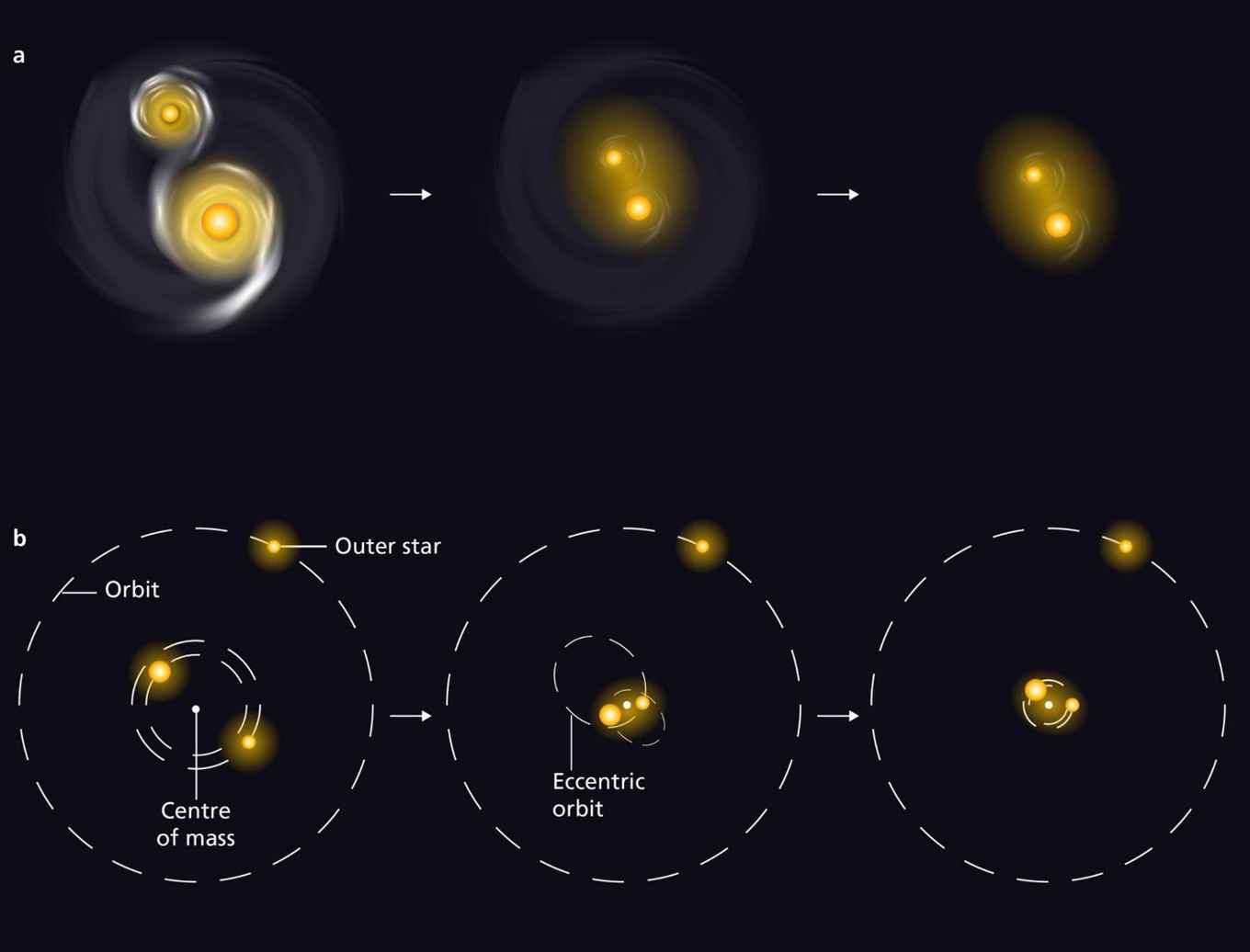Massive binary stars approach each other rapidly soon after birth
20 January 2021

Stars are born in clusters within clouds of gas and dust. A relatively small proportion of these have masses of more than eight times that of the sun and are therefore classified as ‘massive’. They often form binary star systems with small separations between the individual stars. Up to now it was not understood exactly how this works. The formation of a close partner was thought to occur in the rapidly rotating innermost parts of a gas disk around the more massive main star. However, the gas in these areas does not have the tendency to collapse and form a partner.
In recent years the astronomers observed several young star formation regions. They used various spectrographs mounted on ESO's Very Large Telescope in Northern Chile, to measure the radial velocity of individual massive stars (the speed along the line of sight). They combined these data to obtain the massive stars’ velocity dispersion: the statistical spread of the radial velocity that results from having an – often unobserved – partner. The most important component of the stars’ radial velocity is their orbital speed. This is the speed at which the stars circle around each other. It increases as the orbits shrink and the stars come closer together.
The astronomers observed a correlation between the velocity dispersion of massive stars in clusters and their age: the dispersion increases considerably within a million years. They conclude that the orbital velocities of the binary stars increase and so the orbits become smaller. Thus partners are formed in the outer parts of the gas disks where gas can condense to form a star, and only then do they approach each other for an intimate dance.
Co-author Frank Backs (University of Amsterdam) simulated the orbital periods of the binary stars that are consistent with the measured velocity dispersions. Backs explains: ‘Simulating the orbital period distribution of the binary stars in many hypothetical clusters enabled me to compute which orbital plane is associated with an observed velocity dispersion. These simulations were necessary because we do not know much about the binary star systems, such as the orientation of their orbital plane, which impacts the observed dispersion in the velocity.’
The astronomers now know how long massive binary stars take to shrink from a wide to a smaller orbit. Co-author Hanneke Poorta (University of Amsterdam): ‘This million years gives us an important indication of the efficiency of the approach mechanism. What we need to focus on now is unravelling this mechanism.’ Two possible mechanisms are interactions with gas and dust that is left over from the star-forming process, and interaction with a third star in the system.
Publication details
M.C. Ramírez-Tannus, F. Backs, A. de Koter, H. Sana, H. Beuther, A. Bik, W. Brandner, L. Kaper, H. Linz, Th. Henning, and J. Poorta. A relation between the radial velocity dispersion of young clusters and their age: Evidence for hardening as the formation scenario of massive close binaries. Astronomy and Astrophysics 645, January 2021.